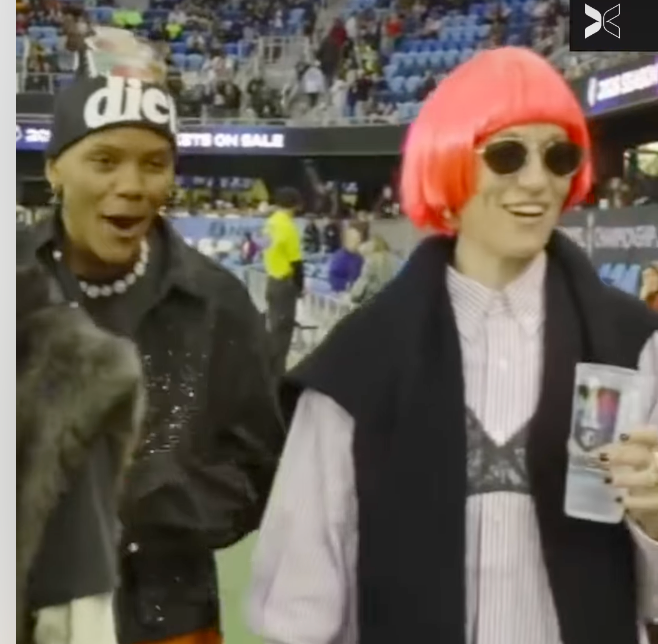ACCORDING TO 2000 CENSUS DATA, there are 12.3 million Hispanic-Americans under the age of 17 — the largest youth group of any ethnicity in the U.S. After years of neglect, marketers have begun to target this growing sector by integrating Latino characters in children’s media and licensing those properties to toy and apparel manufacturers.
All signs point to continued growth of the U.S. Latino middle class, which increased 80% between 1979 and 1998. Additionally, the Selig Center for Economic Growth projects that U.S. Latino buying power will increase from an estimated $580.5 billion in 2002 to $926.1 billion by 2007, an estimated 9.4% of U.S. buying power.
“Because the Hispanic population is much younger than the general market, there are a lot of people in the workforce,” says Maria Madruga, president of Miami-based MASS Promotions. “That accounts for very strong buying power.”
Despite population growth and acclimation, almost half of Hispanic-Americans surveyed in July 2003 by Euro RSCG Worldwide said they are more likely to buy Latino products or brands.
“In the Hispanic market we still have less of an infrastructure to deliver the message,” Madruga says. “Promotion is done on a granular level — with specific grassroots campaigns in certain key markets.”
Addressing concerns for language retention and cultural preservation, Sesame Workshop has consistently been at the forefront of bilingual programming. “With Sesame Street, we have always incorporated Spanish into the programming, as well as develop Hispanic characters,” says Margaret Pepe, director of licensing.
Plaza Sesamo, the Spanish-language adaptation, airs weekly on PBS and TeleFutura reaching 84% of U.S. Hispanic households.
Plaza Sesamo-inspired children’s apparel debuted at 59 Mervyn’s locations in February, and the line is set to roll out at additional Mervyn’s, Wal-Mart, Kohl’s, JCPenney and Sears stores this spring. “We are working to keep Plaza relevant and extend our licensing program,” Pepe says. “We launched with apparel and are currently looking at home video, audio products and looking to expand partnerships with retailers.”
The licensing deal includes apparel from Children’s Apparel Network, bags from L’Egent, accessories from Berkshire, sleepwear from AME and shoes from BBC Footwear.
“For us, the Plaza Sesamo brand is a way to tap into Hispanic consumers,” explains Heather Hanssen, marketing director at Sesame Workshop. “We plan to put a big push into this product.”
Debuting on PBS Kids this fall, Scholastic Entertainment’s The Misadventures of Maya and Miguel features 10-year-old Latino twins. The animated situation comedy targets six- to-eight year olds and will be broadcast in both English and Spanish five times a week.
“This is a call-to-action — there is clearly a need to enter the Hispanic market,” says Cheryl Gotthelf, executive project director for Scholastic Entertainment’s Clifford series. “We developed original content with two goals: to celebrate cultural diversity and support Spanish language learning.”
“Multiculturalism isn’t only a good thing anymore — it’s a reality in which we are living. We have to give our kids the tools to be successful and integrate themselves into society as well as give other kids a global view,” says Mindy Figueroa, project manager.
Scholastic Entertainment is actively seeking underwriters for the series, which has already been picked up for 65 episodes.
“We will also launch two Web sites [pbs.org and scholastic.com] and anticipate a comprehensive marketing, promotion and licensing campaign to go along with Maya and Miguel,” says Leslye Schaefer, senior VP-marketing and consumer products for Scholastic Entertainment.
The animated series will be backed by Scholastic’s distribution in schools reaching 53 million kids and 3.3 million teachers across the country. Soft goods including apparel, accessories, and bedding will launch in Spring 2005 and toys and hard goods roll out in Fall 2005.
Nick Jr.’s Dora the Explorer features the cartoon world’s first Hispanic heroine. Dora continues to be the highest-rated preschool show on commercial television among kids aged two to five.
“Nick has a history of introducing kids to all cultures; future shows are in development that will introduce more Hispanic characters,” says Sara Levin, Nickelodeon media relations. The show teaches that speaking Spanish is both a valuable tool and a source of pride.
Dora is currently on a live tour sponsored by Pampers, Bounty, Crest and Teddy Grahams.
Fisher-Price is the master toy licensee for Dora the Explorer and debuted new toys at Toy Fair in February. Dora’s Talking House rolls out in July incorporating bilingual phrases in an adobe-style play space.
“We are doing a couple of things with Fisher-Price to maintain Dora’s diversity message, a feature that runs through the line,” says Jim Davey, VP-marketing and toys for Nickelodeon. “Number one, we feature ‘say it two ways’ with our toys — toys always talk and sing in both English and Spanish. The second thing is making sure that the toys are true to the Latin designs and influences of the show.”
Lego launched play sets in March featuring Dora and her cousin Diego.
According to Davey, “We work with cultural consultants to keep toys authentic.”



